Volume 1-8 (2009-16)
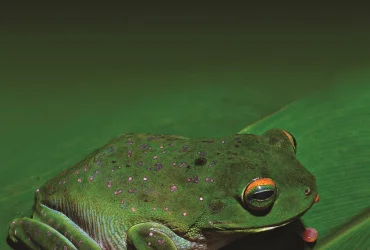 v5i2.118
v5i2.118ISSN: 1800-427X (print)
eISSN: 1800-427X (online)
DOI:10.47605/tapro.v5i2.118
Submitted date: 25 July 2012
Accepted date: 19 November 2013
Published date: 25 December 2013
Pp. 156.
First sighting of Long-tailed duck from West Bengal
A. Raha & D. Gupta*
*Corresponding author. E-mail: debanta_gupta@yahoo.com
Long-tailed duck, Clangula hyemalis is vulnerable and one of the rare vagrants in Indian subcontinent. This species was first sighted in Arunachal Pradesh in 1935, subsequently, in Kashmir, Uttarakhand, and Punjab in 2001. On 21 February 2013, Shantanu Prasad sighted a single female long-tailed duck at Gajoldoba, West Bengal. This is the first record of this bird from Eastern India observed on 28 February 2013.
Section Editor: Varadharajan Gokula
eISSN: 1800-427X (online)
DOI:10.47605/tapro.v5i2.118
Submitted date: 25 July 2012
Accepted date: 19 November 2013
Published date: 25 December 2013
Pp. 156.
First sighting of Long-tailed duck from West Bengal
A. Raha & D. Gupta*
*Corresponding author. E-mail: debanta_gupta@yahoo.com
Long-tailed duck, Clangula hyemalis is vulnerable and one of the rare vagrants in Indian subcontinent. This species was first sighted in Arunachal Pradesh in 1935, subsequently, in Kashmir, Uttarakhand, and Punjab in 2001. On 21 February 2013, Shantanu Prasad sighted a single female long-tailed duck at Gajoldoba, West Bengal. This is the first record of this bird from Eastern India observed on 28 February 2013.
Section Editor: Varadharajan Gokula
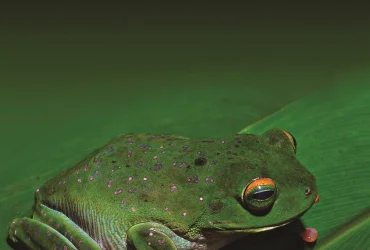 v5i2.117
v5i2.117ISSN: 1800-427X (print)
eISSN: 1800-427X (online)
DOI:10.47605/tapro.v5i2.117
Submitted date: 22 November 2012
Accepted date: 26 August 2013
Published date: 25 December 2013
Pp. 154–155.
On usage of perches by the Spotted Owlet
A.M.S. Ali* & R. Santhanakrishnan
*Corresponding author. E-mail: amsamsoor@yahoo.co.in
The Spotted Owlet Athene brama (Temminck, 1821), although a common, native species in India, is poorly studied. The present study examines the use of various perch substrates and perching heights by Spotted Owlets between 2007 and 2009 in Madurai District (9°30’N, 77°28’E), Southern India. Four habitats; rural, urban, riverbanks, and agricultural lands (transects of 4500m length and 50m width were used for each habitat) were selected and surveyed between 18:00 and 22:00 h for usage of perches. In each survey, perching substrate and perching height used (height on which Spotted Owlet perched) while foraging were recorded following Bell & Ford (1990). The perching heights were grouped into various class intervals: 0–2m, >2–4m, >4–6m, >6–8m, >8–10m, >10m. The chi-square test was applied for testing percent usage of perch substrates and perching heights between habitats.
Section Editor: Varadharajan Gokula
eISSN: 1800-427X (online)
DOI:10.47605/tapro.v5i2.117
Submitted date: 22 November 2012
Accepted date: 26 August 2013
Published date: 25 December 2013
Pp. 154–155.
On usage of perches by the Spotted Owlet
A.M.S. Ali* & R. Santhanakrishnan
*Corresponding author. E-mail: amsamsoor@yahoo.co.in
The Spotted Owlet Athene brama (Temminck, 1821), although a common, native species in India, is poorly studied. The present study examines the use of various perch substrates and perching heights by Spotted Owlets between 2007 and 2009 in Madurai District (9°30’N, 77°28’E), Southern India. Four habitats; rural, urban, riverbanks, and agricultural lands (transects of 4500m length and 50m width were used for each habitat) were selected and surveyed between 18:00 and 22:00 h for usage of perches. In each survey, perching substrate and perching height used (height on which Spotted Owlet perched) while foraging were recorded following Bell & Ford (1990). The perching heights were grouped into various class intervals: 0–2m, >2–4m, >4–6m, >6–8m, >8–10m, >10m. The chi-square test was applied for testing percent usage of perch substrates and perching heights between habitats.
Section Editor: Varadharajan Gokula
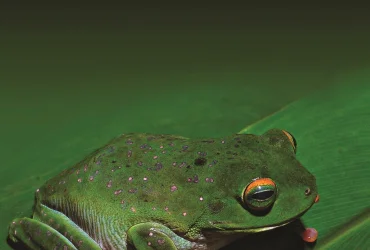 v5i2.116
v5i2.116ISSN: 1800-427X (print)
eISSN: 1800-427X (online)
DOI:10.47605/tapro.v5i2.116
Submitted date: 31 November 2012
Accepted date: 12 October 2013
Published date: 25 December 2013
Pp. 152–153.
Egg-predation of Hemidactylus frenatus
T.G.T. Kusuminda, D.A.A.D. Athukorala & D.M.S.S. Karunarathna*
*Corresponding author. E-mail: dmsameera@gmail.com
Hemidactylus frenatus Duméril & Bibron, 1836 usually occur in pairs, is commonly found in human settlements and is thus known as a ‘house gecko’. It only rarely inhabits undisturbed forests in the wet zone though it is comparatively common in dry, intermediate and semi-arid forests in Sri Lanka. This nocturnal species spends daytime in crevices but feeding during daytime has been observed. Although it is not highly territorial, most individuals seem to occupy the same place for an extended period. Group behavior can also be observed, especially within human habitations in the dry zone. This species can commonly be seen on lampposts where it waits for insect prey to be attracted to the light. In addition to the expected assortment of insect prey it also commonly feeds on rice, bread and other household food and hence has become a ‘pest’ in most houses. Habitual cannibalism is shown by some adults as they feed on juveniles. Eggs as a part of a gecko’s diet, whether of their own species or those of another species, are recorded in captivity. In this paper we describe the egg-feeding behavior of H. frenatus in the wild.
Section Editor: John Rudge
eISSN: 1800-427X (online)
DOI:10.47605/tapro.v5i2.116
Submitted date: 31 November 2012
Accepted date: 12 October 2013
Published date: 25 December 2013
Pp. 152–153.
Egg-predation of Hemidactylus frenatus
T.G.T. Kusuminda, D.A.A.D. Athukorala & D.M.S.S. Karunarathna*
*Corresponding author. E-mail: dmsameera@gmail.com
Hemidactylus frenatus Duméril & Bibron, 1836 usually occur in pairs, is commonly found in human settlements and is thus known as a ‘house gecko’. It only rarely inhabits undisturbed forests in the wet zone though it is comparatively common in dry, intermediate and semi-arid forests in Sri Lanka. This nocturnal species spends daytime in crevices but feeding during daytime has been observed. Although it is not highly territorial, most individuals seem to occupy the same place for an extended period. Group behavior can also be observed, especially within human habitations in the dry zone. This species can commonly be seen on lampposts where it waits for insect prey to be attracted to the light. In addition to the expected assortment of insect prey it also commonly feeds on rice, bread and other household food and hence has become a ‘pest’ in most houses. Habitual cannibalism is shown by some adults as they feed on juveniles. Eggs as a part of a gecko’s diet, whether of their own species or those of another species, are recorded in captivity. In this paper we describe the egg-feeding behavior of H. frenatus in the wild.
Section Editor: John Rudge
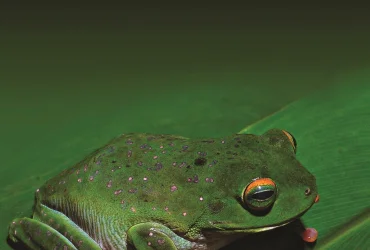 v5i2.115
v5i2.115ISSN: 1800-427X (print)
eISSN: 1800-427X (online)
DOI:10.47605/tapro.v5i2.115
Submitted date: 3 November 2012
Accepted date: 19 November 2013
Published date: 25 December 2013
Pp. 151.
Prey-predator relationship between wolf spider and brachyuran crabs
P.J. Pandya, J.N. Trivedi & K.D.Vachhrajani*
*Corresponding author. E-mail: kauresh@gmail.com
Wolf spiders (Arachneae: Lycosidae) are one of the successful hunters which extend their range through various habitats such as wetlands, springs, and sandy coasts, though less information is available on their feeding and predatory behaviour. During the course of regular field visits for an ecological study of benthic fauna on the Mahi estuarine mouth at Gulf of Khambhat, on the western coast of India (22°12’59.13”N, 72°36’55.47”E), interesting observations about the prey-predation relationship between the wolf spider (Lycos sp.) and two crab species Uca lactea annulipes and Cardisoma carnifex were recorded.
Section Editor: Johanna Bleecker
eISSN: 1800-427X (online)
DOI:10.47605/tapro.v5i2.115
Submitted date: 3 November 2012
Accepted date: 19 November 2013
Published date: 25 December 2013
Pp. 151.
Prey-predator relationship between wolf spider and brachyuran crabs
P.J. Pandya, J.N. Trivedi & K.D.Vachhrajani*
*Corresponding author. E-mail: kauresh@gmail.com
Wolf spiders (Arachneae: Lycosidae) are one of the successful hunters which extend their range through various habitats such as wetlands, springs, and sandy coasts, though less information is available on their feeding and predatory behaviour. During the course of regular field visits for an ecological study of benthic fauna on the Mahi estuarine mouth at Gulf of Khambhat, on the western coast of India (22°12’59.13”N, 72°36’55.47”E), interesting observations about the prey-predation relationship between the wolf spider (Lycos sp.) and two crab species Uca lactea annulipes and Cardisoma carnifex were recorded.
Section Editor: Johanna Bleecker
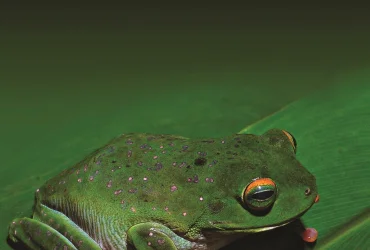 v5i2.114
v5i2.114ISSN: 1800-427X (print)
eISSN: 1800-427X (online)
DOI:10.47605/tapro.v5i2.114
Submitted date: 20 May 2013
Accepted date: 18 November 2013
Published date: 25 December 2013
Pp. 148–150, Pls. 6–7.
Syzygium rama-varma (Myrtaceae) from southern Western Ghats, India
S.M. Shareef*, P.E. Roy, E.S.S. Kumar & M.V. Krishnaraj
*Corresponding author. E-mail: smshariftbgri@gmail.com
Based on the collections from Travancore, India (Chemunji hills, Muthukuzhivayal Bourdillon s.n.), Bourdillon (1904) described and illustrated Eugenia rama-varma Bourd. (Myrtaceae, as “Rama Varma”, “named after H.H. [Mulam Thirunal Rama Varma] the Maharaja of Travancore”, with a comment: “a very handsome evergreen tree found at high elevation above 4000 ft”. Gamble (1919) transferred it to Jambosa, as J. rama-varma (Bourd.) Gamble. Later Chithra in Nair & Henry (1983) transferred it to Syzygium and made the combination S. rama-varma (Bourd.) Chithra (as “rama-varmae”).
Section Editor: James L. Reveal
eISSN: 1800-427X (online)
DOI:10.47605/tapro.v5i2.114
Submitted date: 20 May 2013
Accepted date: 18 November 2013
Published date: 25 December 2013
Pp. 148–150, Pls. 6–7.
Syzygium rama-varma (Myrtaceae) from southern Western Ghats, India
S.M. Shareef*, P.E. Roy, E.S.S. Kumar & M.V. Krishnaraj
*Corresponding author. E-mail: smshariftbgri@gmail.com
Based on the collections from Travancore, India (Chemunji hills, Muthukuzhivayal Bourdillon s.n.), Bourdillon (1904) described and illustrated Eugenia rama-varma Bourd. (Myrtaceae, as “Rama Varma”, “named after H.H. [Mulam Thirunal Rama Varma] the Maharaja of Travancore”, with a comment: “a very handsome evergreen tree found at high elevation above 4000 ft”. Gamble (1919) transferred it to Jambosa, as J. rama-varma (Bourd.) Gamble. Later Chithra in Nair & Henry (1983) transferred it to Syzygium and made the combination S. rama-varma (Bourd.) Chithra (as “rama-varmae”).
Section Editor: James L. Reveal
Hubungi Kami
The ultimate aim of the journal is to provide an effective medium for communication of the latest and best scientific information.
Copyright © 2020 Taprobanica. All Rights Reserved
Jasa Pembuatan Website by IKT




